
(This is an expanded version of a post that first appeared on 10th November. It has also been published on Les 5 du Vin.)
Last week I was very pleased to be present at a fascinating and well organised tasting – a comparison of the aging potential of oaked Sauvignon Blanc from Bordeaux and from the Loire. The Bordeaux component was organised by Richard Bampfield MW and Jean-Christophe Mau, while Chris Kissack – the wine doctor – occupied the Loire selection. The idea was to show a relatively recent vintage along with an older one.
I have to say from the outset that having tasted all the wines I felt no need to change my allegiance away from the Loire. Where the oak on the Loires was well-judged, it was often more marked on those from Bordeaux. The Loires also had a freshness that few of the Bordeaux wines did.
Just to show that this wasn't just my inherent bias Jean-Christophe Mau generously praised the Loire Sauvignons in the report in The Drinks Business:
'Also at the tasting was Jean-Christophe Mau, owner and manager of Pessac-Leognan estate Château Brown. Commenting on the comparison of oaked Sauvignon Blancs from the Loire Valley and Bordeaux, Mau said he believed the Bordeaux region was lagging behind the Loire in terms of style and value.
“I think they have too much oak, the Bordeaux style, too much extraction also,” he said. “And maybe the acidity is not at a good level; sometimes it is too high.
“For a lot of people who make wine in Bordeaux it’s more important to make red than white. The vision for white is maybe too much a vision of the red.
“For most of the people the top quality from Sauvignon is from the Loire Valley. We have begun to change that in Bordeaux but the prices for the top wine, I think, are too expensive.”
All of the Loires shown came from the Central Vineyards, so a continental climate in contrast to the maritime climate of Bordeaux. In a sense it wasn't entirely a comparison of equals as all the Loire wines were pure Sauvignons, while from Bordeaux there were no pure varietal Sauvignons: all were blends. Château Smith-Haut-Lafitte with 90% Sauvignon Blanc had the highest proportion with just 5% each of Sauvignon Gris and Sémillon.
I suspect that the reason for the Loire's success in the delicate use of oak comes down to the region's long experiment – now virtually a tradition – of little use of barriques – either 225 or 228 litres. Instead 400 to 600 litre barrels (demi-muids) and increasing small wooden vats, often from Stockinger and around 12 hectolitres capacity. This immediately reduces the influence of the oak as the proportion of liquid to oak is increased. Just to add confusion some Loire producers are now using the term 'barriques' for all small barrels when they are actually referring to barrels from 300-600 litres. This is not very helpful!
I think Jean-Christophe has part of the explanation when he says that Bordeaux producers tends to think red first, so the size of the barrel that is used for red tends also to be used for the whites. Whereas, in the Loire, where whites overall make up around 55% of production and a much higher proportion in the Central Vineyards, the thinking has long been very different. The choice, when oak is used, has increasingly been what best suits my white wines.
Later Richard suggested that Jean-Christophe may well be thinking of experimenting in the future with larger sized barrels for his whites.
My grateful thanks to the organisers: Chris, Jean-Christophe and Richard.
The Loire Sauvignons:
 La Tour Saint Martin, Bertrand Minchin - 2012 and 2002
La Tour Saint Martin, Bertrand Minchin - 2012 and 2002
The 2002 was the most evolved Loire in the tasting but attractively honeyed
 2012 and 2008 Alain Cailbourdin Triptyque:
2012 and 2008 Alain Cailbourdin Triptyque:
neither vintage showing noticeable oak
believe that 2008 was first vintage
 2012 and 2002 Tradition Cullus, Pouilly-Fumé, Masson Blondelet
2012 and 2002 Tradition Cullus, Pouilly-Fumé, Masson Blondelet
The still tight 2012 had just been bottled, while the 2002 provided further
evidence of what a lovely vintage this is.
 2012 and 2002 Silex, Domaine Didier Dagueneau with the 2012
2012 and 2002 Silex, Domaine Didier Dagueneau with the 2012
made by Louis-Benjamin Dagueneau
Unfortunately by the time I got to the 2002 there was
only a dribble left in the bottle but still showing lovely freshness and length .
Amongst all the wines shown the only corked bottle was the back up bottle
of 2002 Silex – sod's or corks' law!
 2012 and 2010 Cul de Beaujeu, Sancerre Lucien Crochet.
2012 and 2010 Cul de Beaujeu, Sancerre Lucien Crochet.
I believe 2010 was the first vintage of Gilles' single vineyard
bottling from the very steep vineyard that dominates Chavignol to the west.
 2012 and 2008 Satellite, Sancerre, Alphonse Mellot
2012 and 2008 Satellite, Sancerre, Alphonse Mellot
From Les Monts Damnés 2012 particularly impressive
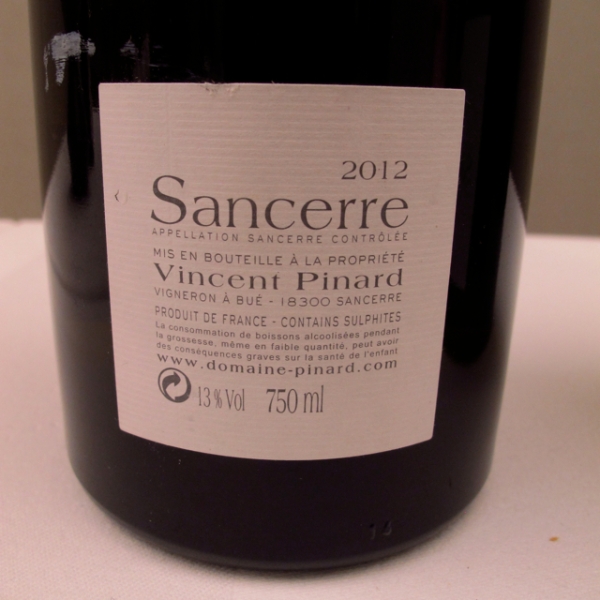 2012 and 2008 Petit Chemarin, Sancerre, Vincent Pinard
2012 and 2008 Petit Chemarin, Sancerre, Vincent Pinard
with the evolved 2008 particularly impressive
 2012 and 2002 Etienne Henri, Sancerre, Henri Bourgeois
2012 and 2002 Etienne Henri, Sancerre, Henri Bourgeois
I found the 2002 was quite honeyed whereas
one of my colleagues found it quite oaky.
I think I may still have a bottle of the 1987 acquired
during my first visit to Henri Bourgeois in late October 1987 –
the first time I met Jean-Marie Bourgeois
From Bordeaux:
2012 Les Arums, Château Lagrange
2012, 2010, 2009 Château Brown
2012 Caillou Blanc, Château Talbot
2012, 2010, 2006, Château Smith-Haut-Lafitte
2012, 1999 Domaine de Chevalier
2012 Pape-Clément
2012, 2006 Y' d'Yquem, Château d'Yquem
 La Tour Saint Martin, Bertrand Minchin - 2012 and 2002
La Tour Saint Martin, Bertrand Minchin - 2012 and 2002 2012 and 2002 Tradition Cullus, Pouilly-Fumé, Masson Blondelet
2012 and 2002 Tradition Cullus, Pouilly-Fumé, Masson Blondelet 2012 and 2010 Cul de Beaujeu, Sancerre Lucien Crochet.
2012 and 2010 Cul de Beaujeu, Sancerre Lucien Crochet. 2012 and 2008 Satellite, Sancerre, Alphonse Mellot
2012 and 2008 Satellite, Sancerre, Alphonse Mellot


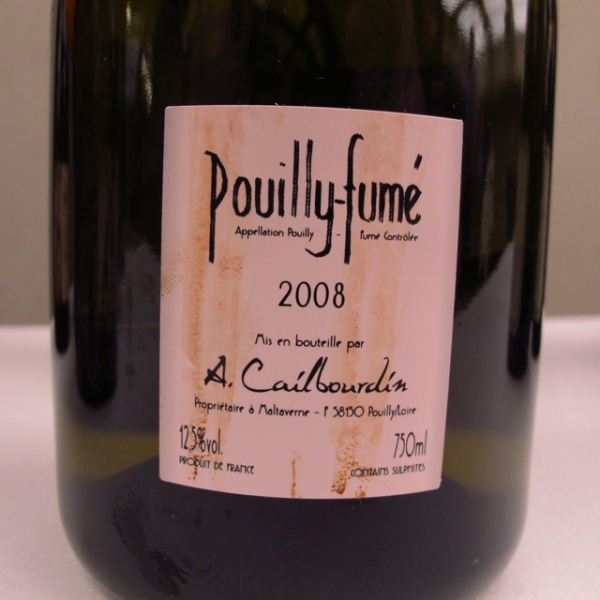






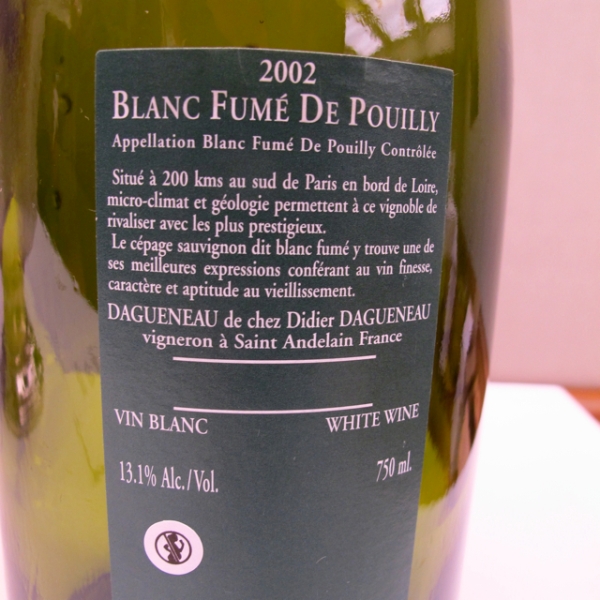







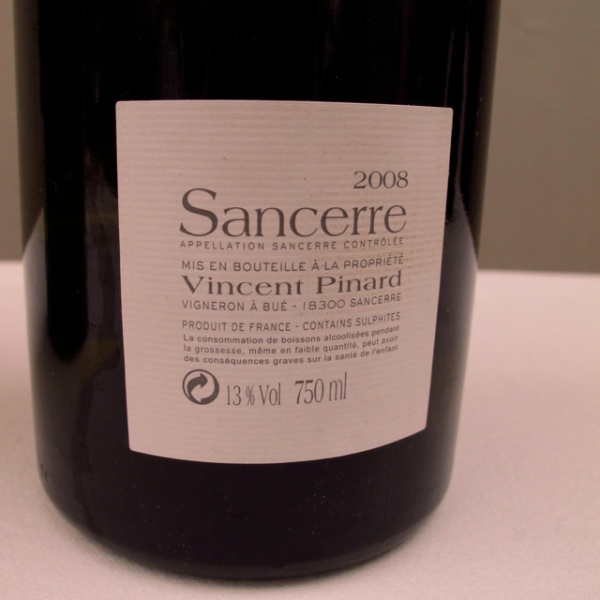

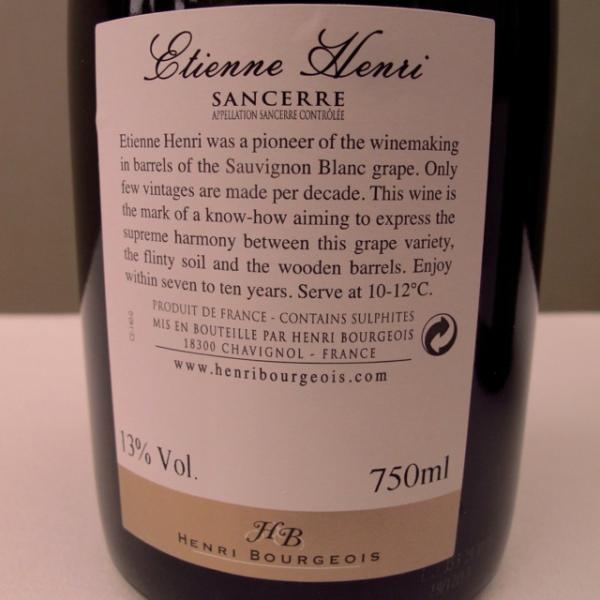





No comments:
Post a Comment